One of the most common mistakes people make is to pack more than they need for a trip. They end up carrying an extra bag or a particularly heavy bag for the duration of their trip, with a number of unused items in it. Some planning can help you learn how to pack for a week in a backpack and avoid such scenarios. In fact, you can pack more than enough clothes and other essentials for a week-long trip in a single carry-on backpack that won’t unnecessarily strain your back or shoulder muscles and will be small enough to be considered cabin luggage in a flight.

Packing light not only significantly reduces the weight of the luggage you will be carrying during the trip, but it has several other benefits as well. For starters, you will not have to wait at the luggage carousel for your bag to arrive, which is a complete waste of time. The airlines won’t lose your luggage, because you will have it with you at all times. Also, you won’t have to pay the exorbitant fees airlines charge for luggage that weighs beyond their pre-determined baggage allowance.
Popular Week Long Trip Backpacks
Table of Contents
Selecting the Right Backpack
Backpacks are undoubtedly more convenient than suitcases or duffel bags. However, if you have a large backpack, one that you use for long trips, the chances are that you will end up packing more than you need. It’s our natural instinct to use up any empty space in the backpack, which leads to overpacking. So, the first step of how to pack for a week in a backpack is that you need to buy a smaller backpack if you don’t already have one.
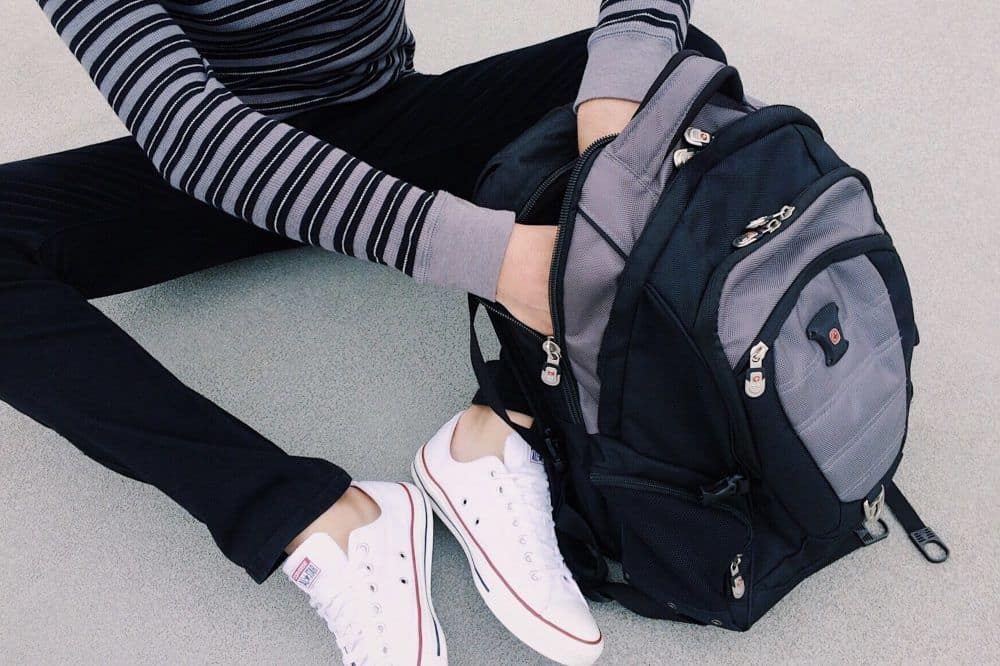
The ideal size for a backpack would be between 30 liters and 45 liters. Make sure that there are plenty of pockets and pouches in the backpack to increase the storage space, without increasing the size of the backpack itself. Ideally, you should buy a side-loading backpack as opposed to the traditional top-loading backpack. It just makes it a lot easier to pack and allows you to keep a check on unused spaces more effectively.
Try on the backpack before buying it to ensure that the shoulder straps have good quality padding, along with the hip straps for comfort. Don’t look for a bargain while buying a backpack. Spend a little extra, if required, for a good quality backpack. The difference between a high-end backpack and a cheap backpack becomes apparent after a couple of days of carrying it.
Carry a daypack with you as well. You can use it to carry essentials such as your passport and other documents, a bottle of water, an extra t-shirt or towel for the beach while you are exploring on your trip. You don’t want to lug even a medium-sized backpack with you at all times. Remember that you will have to pack the daypack inside the backpack, so you will have to take into consideration the space this daypack will take up while you learn how to pack for a week in a backpack.
Monitor the Weather
The weather conditions of the place you’re traveling to determine what clothes and accessories you need to carry, which in turn will inform you how to pack a backpack for a week. There are a number of apps and websites that allow you to keep a track of the current weather in any place around the world, along with weather forecasts for up to one month in the future. This is important because it allows you to eliminate items from your backpack that you would have otherwise carried or add items to your backpack that you wouldn’t have thought of carrying.
For example, if the prevalent weather condition and forecast says that it might rain while you’re visiting, you can pack a raincoat and leave out the extra shorts you were going to carry. Or if the weather is expected to be bright and sunny through the length of your stay, then you can remove the jacket(s) you were planning to carry and pack a light cardigan instead.
Plan Your Activities for the Week
What will you be doing during your week-long trip? Will you be visiting a lot of historical sites, museums, etc. or will you be heading out for a day-long hike? Are you traveling with your friends and plan to visit the popular night spots in the city? If you plan the main activities in advance, it will help you determine which clothing and accessories you need and which can be left behind.

For example, if you will be spending most of your time hiking and doing other outdoor activities, there’s no harm in carrying a formal shirt or dress. On the other hand, if you plan to spend most of your time in museums, you need a pair of comfortable walking shoes and not the heavy hiking boots.
What Will You Be Carrying?
You have the backpack and a clear idea of what the weather will be like and what activities you will engage in. Now, lay out all of the clothes, footwear, accessories, gadgets, documents, the daypack and anything else you plan to carry with you for the trip. You can lay them out on the floor or the bed, whichever works best for you. Be ready to eliminate items if you want to learn how to pack for a week in a backpack.
Clothes
In terms of clothes, pick lightweight, synthetic materials over cotton. Cotton clothes tend to get wrinkled easily. Whereas synthetic materials are less likely to wrinkle, which allows you to pack them more compactly.
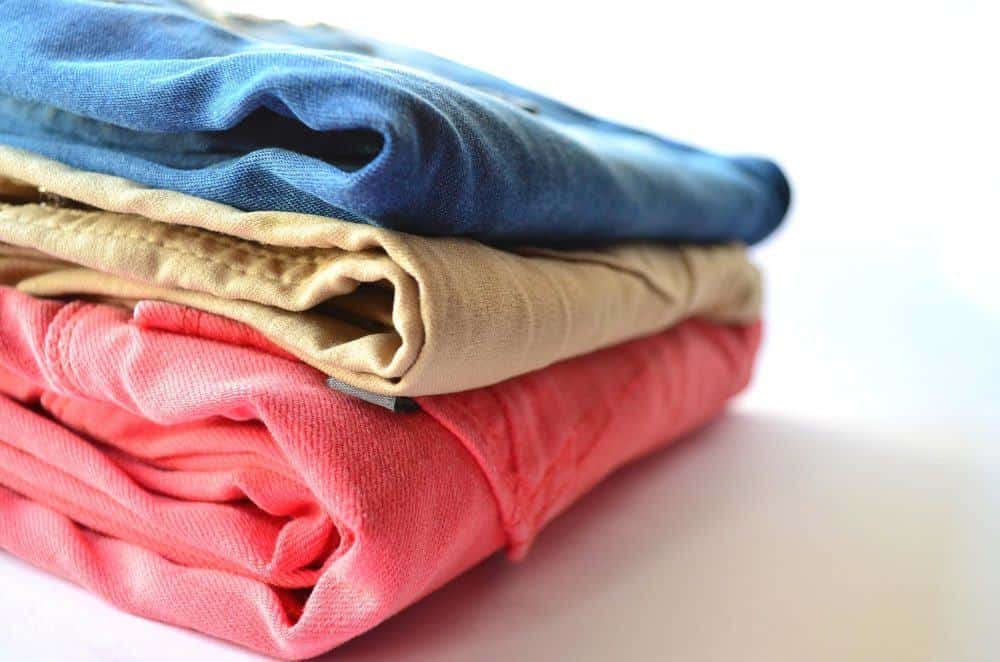
Typically, for a week-long trip, the basic clothing for men will consist of two pairs of jeans, one pair of khakis, two to three short sleeved t-shirts, one short sleeved shirt and one long sleeved shirt, one jacket or cardigan, one pair of shorts, a bunch of underwear (the exact number depends on the types of activities you have planned out) and at least three pair of socks.
The basic clothing for women will consist of two pairs of jeans, three to four short-sleeved tops, two comfortable dresses (alternatively, you can opt for one dress and one skirt to be worn with one of the tops), one jacket or cardigan, two pair of shorts, a bunch of underwear (the exact number depends on the types of activities) and at least three pair of socks.
You should wear the bulkiest items on the flight, which means you wear one of the jeans and the jacket, in this case.
Footwear
Footwear adds a lot of weight and takes up a lot of space in the backpack. So, keep it minimal. One lightweight sandal and one comfortable walking or running shoe should be enough. In case you’re planning to go hiking, replace the shoe with a pair of comfortable but sturdy hiking boots. Similar to the clothes, you wear the bulkiest footwear on the flight, which means either the shoes or the hiking boots.
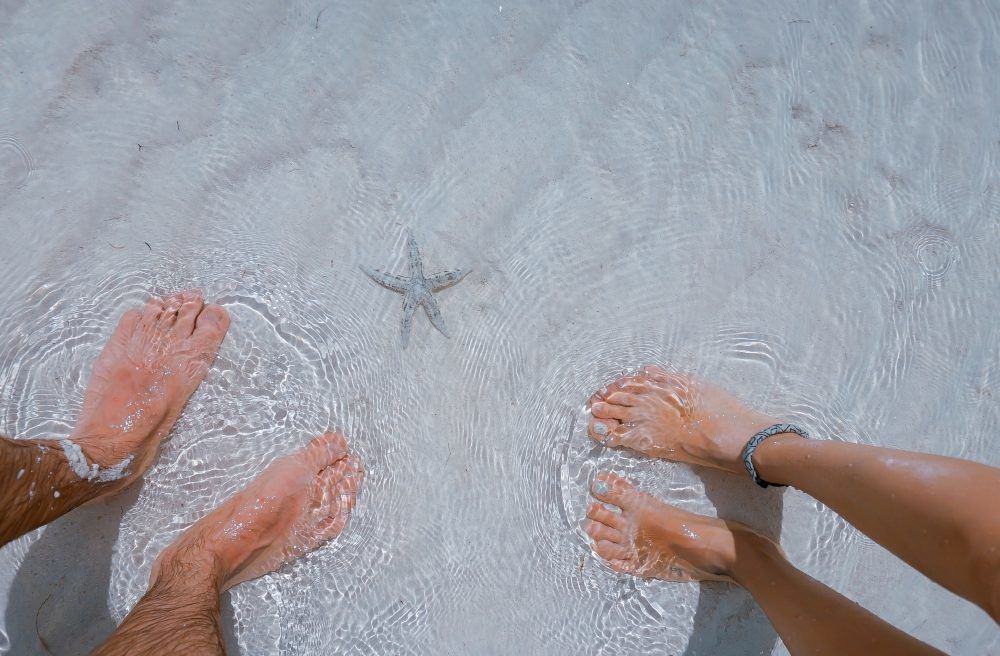
Gadgets
A lot of us pack our high-end DSLRs only to end up clicking most of the photos on our smartphones. Unless one of the key objectives of the trip is photography, leave the DSLR at home. Smartphones have powerful cameras these days, which should be enough. Alternatively, you can carry a small digital camera.
The same holds true for laptops. Unless you’re planning to do some work during the trip, carrying a laptop makes no sense. If you really need access to a bigger screen than your smartphone, then carry a tablet. But it’s hard to think of a use for the tablet that your smartphone can’t satisfy. Be it video calling home, checking your email, accessing important documents that need to be printed, all of it can be done with your smartphone. You don’t need another device.
As mentioned earlier, if you need to work during the trip, carry your laptop. Otherwise, your smartphone is enough. Eliminating unnecessary gadgets also means eliminating extra chargers or battery packs.
The one thing you should definitely pack is an adapter or converter. The electrical system in the United States is different from that in most of Europe and Asia. So, make sure you have a converter or adapter for your phone that can be used in the country you’re traveling to.
Toiletries and Medical Supplies
If any of the items you plan to carry can be easily bought at the place you’re headed to, then it doesn’t make sense to carry them with you. This especially applies to things like toothpaste, toothbrush, shampoo or soap. All of these things are easily available everywhere. Why carry them all the way with you?
If you are very particular about the brands you use, then it’s understandable. But for others, it’s best to eliminate them from the backpack. In regards to medical supplies, carry whatever you need to, especially prescription medication as it might be available elsewhere.
Packing the Backpack
At this stage, you have eliminated all the things that you could. Now it’s time to pack.
Roll Your Clothes
You should roll your clothes to use the space inside the backpack more effectively. This technique, which is referred to as the "army roll" technique, will allow you to pack all of your things in a relatively small carry-on backpack. It also minimizes wrinkles to a certain extent.
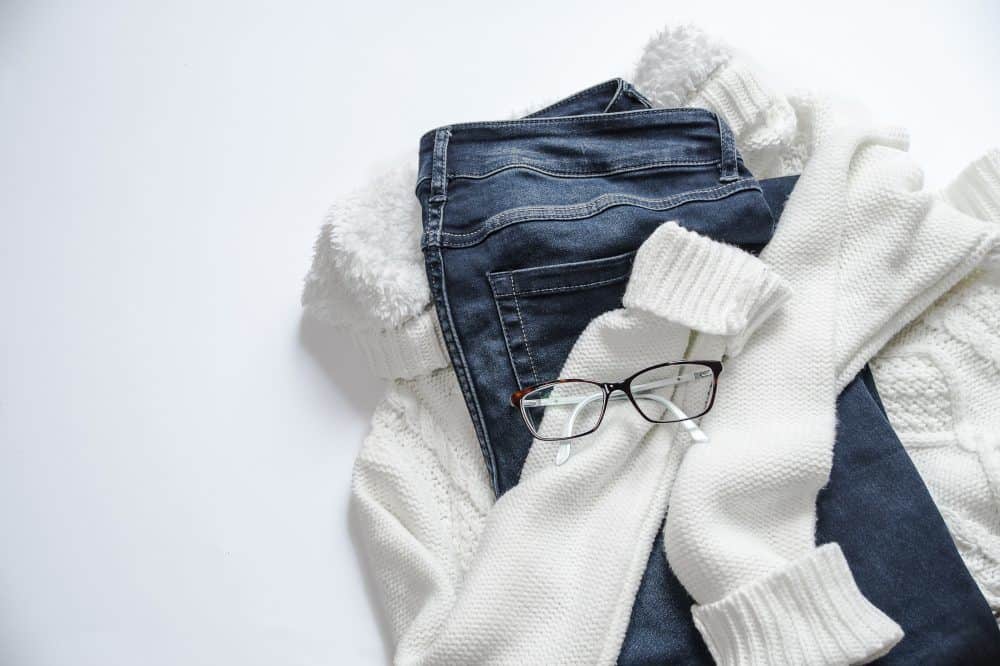
Lay the t-shirts on a flat surface such as a table. Fold a six-inch strip at the bottom of the t-shirt inside out. Now center both the left and right sides of the t-shirt. Make sure that the sleeves are tucked in. Next fold the t-shirt in half, vertically. Beginning from the top of the t-shirt (i.e., from the collar) tightly roll it up. Finally, use the narrow strip you had folded inside-out at the start to secure the t-shirt and keep it compact.
In case of jeans, trousers, and shorts, fold them in half and then roll them tightly. Tie both ends of the roll with thick rubber bands to keep it secure. Your underwear and socks should be rolled as well.
The rolled up jeans, trousers, the spare daypack and the sleeping bag (if you’re carrying one) will go in first in the backpack. These will create a firm but light base in the backpack. If you’re carrying a camera, laptop or tablet, those will go in next. These gadgets should remain in the center of the backpack for maximum protection. The rolls of t-shirts will go on top of the gadgets.
The gaps between the clothes and the unused spaces in the corners should be utilized by stuffing the rolled up underwear and socks in them. Make sure none of the gadgets are poking through the back of the backpack, which might scrape against your back while you’re carrying the backpack. Pack a few t-shirts towards the back to create a cushion.
Packing Organizers
Packing organizers such as compressions dry bags, packing cubes and Ziploc bags enable you to utilize the space inside the backpack a lot more efficiently than the rolling technique allows. Compression dry and wet bags are particularly effective. As the name suggests, these bags compress the clothes packed in them and removes all excess air. Hence, the clothes take up less space in the backpack and remain organized as well.
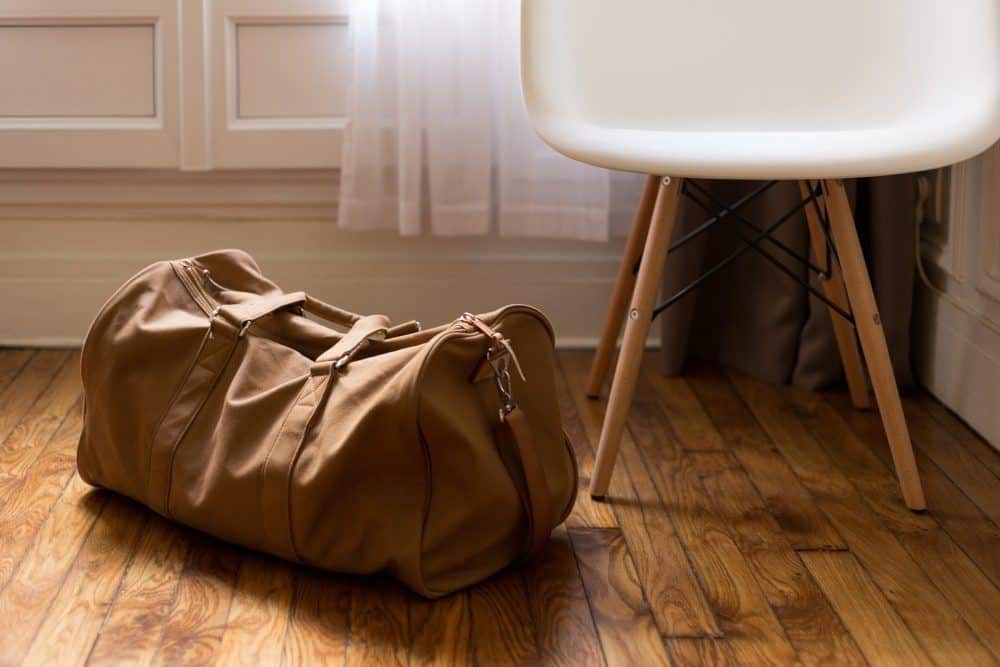
You can use multiple compression bags to pack t-shirts, jeans, and trousers, or jackets separately. It makes the task of repacking the bag during the trip a lot easier too. You can use a dry bag to store a wet towel or dirty clothes to ensure that these don’t mix up with the fresh, clean clothes in the backpack.
Packing cubes are more effective in suitcases and duffel bags, but if you get the right size it can be used in backpacks as well. It doesn’t compress the clothes, but does allow you to organize the clothes and other items. If you’re carrying shirts, especially formal shirts, you should buy packing folders. These keep the shirts wrinkle-free and can be slid into one side of the backpack.
Ziploc bags are ideal for carrying toiletries and medical supplies. It prevents leaks, besides enabling you to segregate different groups of things.
The daypack will be the first thing to go in the backpack. If you have a sleeping bag, then that will go in as well. Depending on the shape and size of the compression bags or packing cubes, you can pack them vertically or horizontally. Make sure to leave some space in the center of the backpack for the gadgets, if you need it. The toiletries bag will go on top of the compression bags, along with your towel.
A Few Other Tips
Conclusion
The only thing that will stop you from packing light for the next trip is fear. Fear that you will need one more pair of jeans or one more pair of shoes or your laptop. When, in fact, you will end up wearing the same pair of jeans for three consecutive days and never touch the laptop. You need to just take the leap and pack light for one trip. By the end of it you will never pick up a heavy backpack again.

Once you get over that initial fear you will realize that the primary objective of the trip is to explore a new place, meet new people, experience new cuisine and more. You will also realize that no one besides you is really paying attention to the fact that you’ve worn the same jeans for the second time.
Pick your clothes in such a way that you can mix and match them. So, you can wear a button down shirt and khaki trousers one day and pair the shirt with a colorful t-shirt and jeans on another day. Also, stick to solid, universal colors such as white, black and grey. You can wear a black shirt or t-shirt with anything. Pack minimally and maximize the trip.
Resources:
Indie Traveller
ILP
